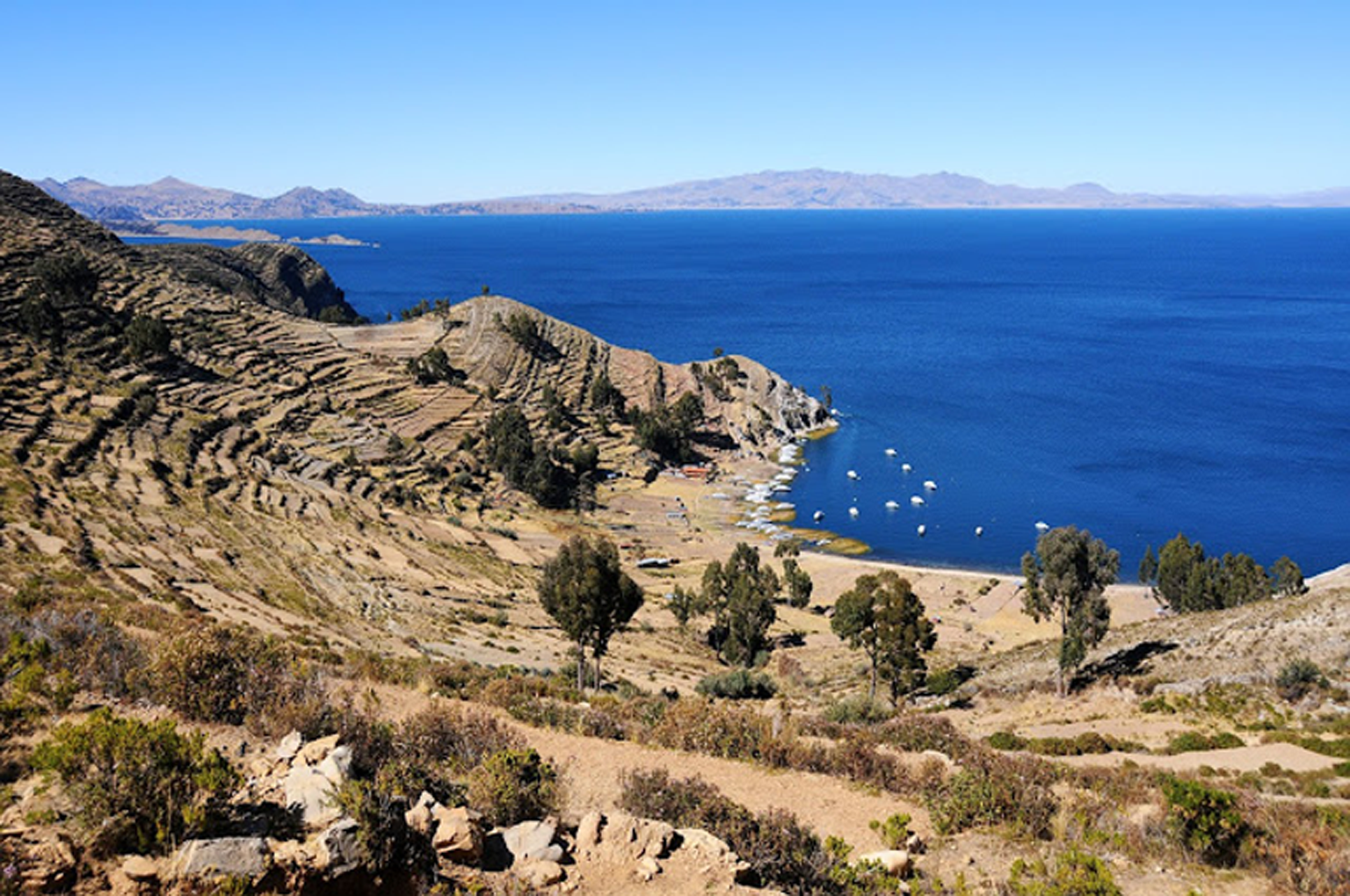- Posted by:
- anjci
- Under:
- Travel: Africa
Earlier this year I visited one of the world’s truly unparalleled places: Madagascar, a large and mysterious island southeast of the African continent.
Prior to my trip, Madagascar had fascinated me for years. The island can be expensive to reach from Europe and is not anyone’s obvious choice of a holiday destination. However, it was every bit worth it: from colossal baobabs rising into the sunset on the western coast to perfectly green rice paddies flooding the gentle hills of the central highlands, Madagascar was a magical experience. Throw into the mix the second-to-none variety of wildlife and landscape, and you are almost guaranteed an unforgettable holiday.
Ring-tailed lemur at Anja Community Reserve
Madagascar is not often seen in the news. In fact, unless you have a direct connection to the island, you are unlikely to stumble across media reports on the country by accident. Before my trip, my exposure to Madagascar was limited to the namesake cartoon, which I had not even watched in full: hardly an accurate depiction of the island or anything to write home about.
However, having visited Madagascar recently, I am convinced that it is one of the most special, albeit little known, places on earth. After a great first introduction, I hope to revisit Madagascar in my lifetime to witness more of the island’s superbly unmatched beauty.
The ultimate view of Madagascar: baobab sunset
What makes Madagascar so unique? I list below several lesser-known facts about the island, each of which would probably still be unknown to me had I not visited Madagascar.
MADAGASCAR IS THE WORLD’S 4TH LARGEST ISLAND
I know – despite being a diligent geography student at school, I somehow wasn’t aware of the fact. It doesn’t help that the conventional world map distorts the dimensions of continents and islands, disproportionately inflating Arctic and Antarctic territories and visually shrinking those nearer the equator – such as the African continent.
Fisherwomen getting busy early in the morning in Morondava
As a result, it may not be easy to see that Madagascar is notably larger than the likes of Baffin or Great Britain. Being close to the North Pole, Baffin looks about three times larger than Madagascar, but is in fact smaller (it is the world’s 5th largest island). Looking similar in size, Great Britain is actually 2.5 times smaller than Madagascar. The enlarged Greenland is indeed the world’s largest island, with New Guinea and Borneo coming second and third, respectively – and Madagascar fourth.
Combined with a relatively small population of 25 million, Madagascar’s size means a lower-than-average population density of around 40 people / sq km. This is comparable with the likes of the Faroe Islands and the Democratic Republic of the Congo – themselves not exactly known to be swarming with people.
Stunning landscapes of Isalo National Park
THE FIRST SETTLERS ON MADAGASCAR WERE OF SOUTH EAST ASIAN ORIGIN
I found this particularly hard to believe. Evidence has been found that the first human settlers on Madagascar arrived between 200 BC and 500 AD in canoes from Borneo – an island some 8,000 km away in a completely different part of the world. A further DNA analysis suggested that the first settlers on Madagascar included a group of 30 Borneo women.
Plenty of other evidence supports the settlers’ South East Asian roots. The Malagasy language spoken in Madagascar has been proven to be distinct from the nearest (geographically) African languages and most closely related to the East Barito languages of Borneo. Purely visually, the people of two of Madagascar’s tribes thought to have descended from Borneo – the Merina and the Betsileo – have obvious Austronesian features like lighter complexion and straight hair, distinctly different from a typical African appearance.
Local man in Antananarivo with distinct Austronesian features
And there are gastronomic similarities too: similarly to Southeast Asia, no Malagasy will imagine his or her meal without rice (the Malagasy equivalent for “eat” is literally “eat rice”). There are few countries in the world where rice has such an enormous importance as in Madagascar. The island’s per capita rice consumption is one of the world’s highest: the statistics I have found are a bit patchy, but Madagascar comfortably surpasses such obvious guesses as China, India and Japan.
THE NAME “MADAGASCAR” IS A MISNOMER OF ANOTHER PLACE IN AFRICA
Strangely enough, the name “Madagascar” would be in breach of local grammar rules as no Malagasy word can end in a consonant. In Malagasy, Madagascar is called “Madagasikara” and its people are referred to as Malagasy. Neither name has roots in the Malagasy language.
Chameleon, the true “local” of Madagascar
The name “Madageiscar” was first recorded by 13th-century Venetian explorer Marco Polo as a corrupted transliteration of the name “Mogadishu”, the Somali port some 2,000 km away for which Polo had mistaken the island. The name caught on with the European colonisers, and this is what we call the island to this day. That’s right – we indirectly call Madagascar “Mogadishu”.
70% OF WILDLIFE SPECIES IN MADAGASCAR ARE FOUND NOWHERE ELSE IN THE WORLD
Madagascar’s prolonged isolation has resulted in unmatched diversity of fauna and flora. Remarkably, 70% of animals and 90% of plants in Madagascar are endemic. Besides lemurs and certain kinds of chameleon, examples of endemic animals include fossa (Madagascar’s largest predator) and tomato frog. The unique ecology of Madagascar has even led some scientists to refer to the country as the world’s “eighth continent”.
Fossa, the biggest threat of lemurs, resembles a cross between a dog and a cat
By far the best-known mammals of Madagascar are lemurs, which are not found in the wild anywhere else in the world. More than 100 species and sub-species of lemurs have been discovered to date in Madagascar, including common brown lemur, red ruffed lemur and (perhaps most recognised thanks to the “Madagascar” cartoon) ring-tailed lemur. The list goes on to include some truly remarkable lemur sub-species such as the elegant sifakas and the smaller nocturnal mouse lemurs.
Verreaux’s sifaka, the most beautiful of them all
What one will not, however, encounter in Madagascar are large wild animals most people associate with the African continent. There are no lions, cheetahs, giraffes or elephants. Most wildlife species in Madagascar tend to be relatively small and may require hours of effort to be sought out in the dense forested areas where they tend to reside.
A BAOBAB TREE CAN STORE UP TO 120,000 LITRES OF WATER IN ITS TRUNK
The literal translation of “reniala” (the Malagasy word for “baobab”) is the “mother of the forest”. Although not widely seen, baobabs are an integral part of a Madagascar landscape.
After lemurs, baobabs are probably the second most recognised sight of the island. Six of nine baobab species in existence are endemic to Madagascar. Of those, the Adansonia grandidieri is the most photographed kind thanks to the so-called Baobab Alley – a short stretch of dirt road near Morondava lined with massive baobab trees, and a single star attraction of Madagascar.
More baobabs at sunset
Besides the unique looks (baobabs have even been referred to as “upside-down” trees thanks to their root-resembling branches), less is known about the many useful properties of the baobab. The bark and flesh of the tree are used as ingredients in traditional medicine, as well as for weaving rope and cloth. Fruit of the baobab contain high volumes of Vitamin C, calcium, iron and potassium, and have been dubbed as the ultimate “superfruit” in the West. I personally found the taste of an unprocessed fruit citrusy and unpleasant, but the health benefits of baobab fruit products are difficult to dispute.
Hugging the baobab: here’s a life milestone achieved
Most strikingly, up to 80% of a baobab’s trunk consists of water, used by the tree to survive the long dry seasons of its habitat. Some animals are known to chew on baobab bark and branches for moisture and nutrients. As a result, baobab is widely referred to as the “tree of life”.
Intrigued? For some practical tips on planning your trip to Madagascar, refer to my post Planning solo travel in Madagascar.






















2017 Newsletter | ANJCI ALL OVER says:
December 22, 2017 at 7:04 pm
[…] READ MORE: WHAT YOU MAY NOT KNOW ABOUT MADAGASCAR […]
2017: Year in Pictures | ANJCI ALL OVER says:
December 20, 2017 at 9:12 am
[…] READ MORE: WHAT YOU MAY NOT KNOW ABOUT MADAGASCAR […]
Deb Pearl says:
November 22, 2017 at 3:19 pm
i didn’t know that Madagascar was the 4th largest island in the world. That is crazy that Great Britain is actually 2.5 times smaller than Madagascar and that 70% of the wildlife are found nowhere else in the world! I have always been interested in going to Madagascar and all of this information just makes me want to go more! I would love to see all the wildlife that is there! Thank you so much for all the fun information!
Tianaina Photographe Madagascar says:
October 8, 2017 at 10:54 pm
Nice post and very nice photos on Flickr.
I hope you will be back soon 🙂
… my country!
anjciallover says:
October 24, 2017 at 12:10 pm
Thanks a lot, Tianaina! I enjoyed my trip in Madagascar earlier this year (funny how it seems so long ago now!). Hope to be back one day to explore other parts of the country 🙂
Vasilije says:
August 23, 2017 at 11:26 pm
Great piece and very educational.
Comments are closed.